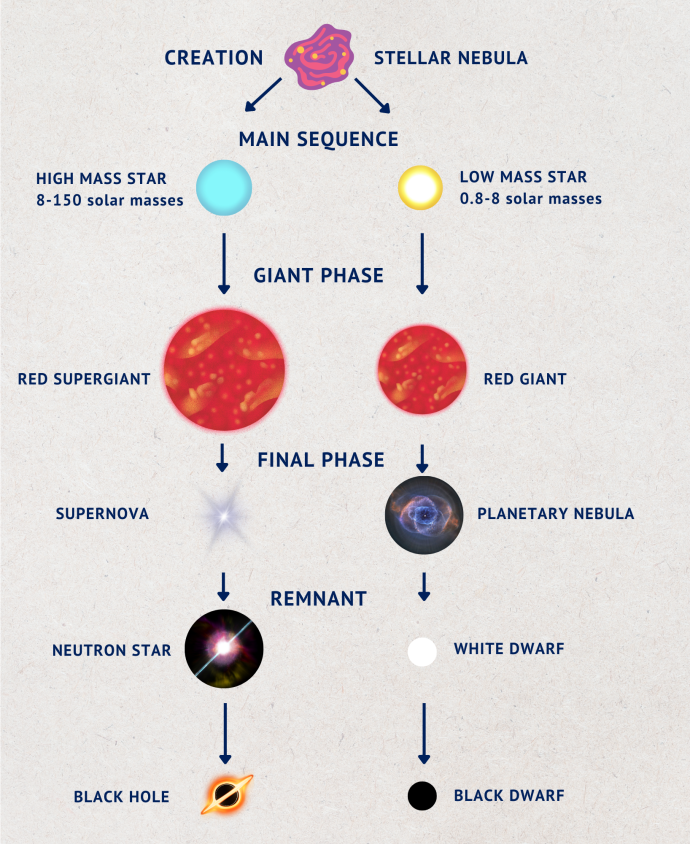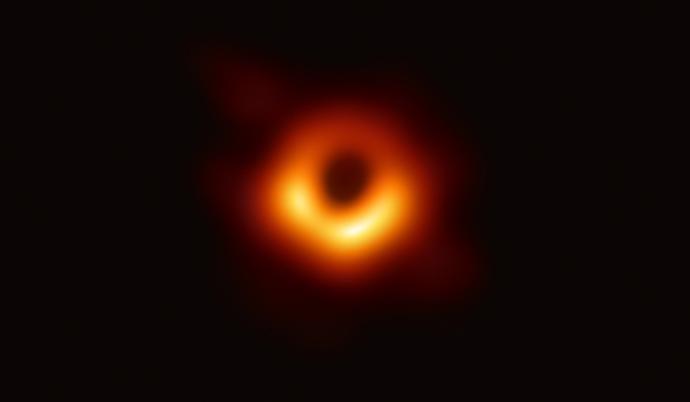Star Formation
Stars form in huge clouds of gas and dust called nebulae. These areas of space are sometimes known as 'stellar nurseries' or 'star forming regions'.

Stellar Evolution
All stars form in nebulae, huge clouds of gas and dust.
Though they shine for thousands of years, stars do not last forever. The changes that occur in a star over time and the final stage of its life depends on a star's size.

Blackholes
Black holes are very strange objects. They are made during supernova explosions. These take place when very massive stars come to the end of their lives.

Stars That Go Bang!
Supernovae are exploding stars which increase in brightness very suddenly and unexpectedly.
Jocelyn Bell-Burnell
Early Life
Jocelyn was born in Lurgan, Northern Ireland. When she was young, the school she went to school would only let the boys study science. Jocelyn’s parents complained to the school and the rules were changed so that the girls could also study science. At the age of 11, Jocelyn failed an important exam. She had to pass the exam to have the chance to go on to study at university. So her parents sent her to a boarding school in York, England where she took the exam again and passed.
Year born: 1943
Research Areas: Radio-Astronomy, Pulsars
Pair the Stages of a Star
Though they shine for many thousands, and even millions of years, stars do not last for ever. They ignite, burn, and then run out of fuel and go out.
Can you match the images of each stage of a star's existence to the correct description?
Order the Stages of a Star
During their lives, stars undergo massive changes. What happens to them depends on how much mass they contain.
Can you put the stages that a low mass star and a high mass star will go through in the correct order on the diagram?
